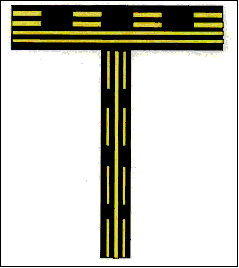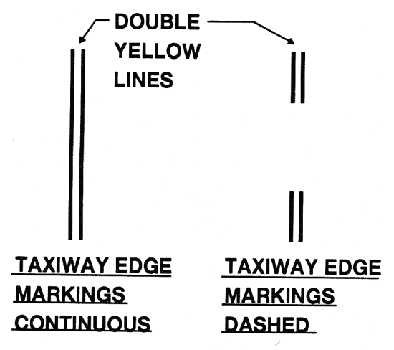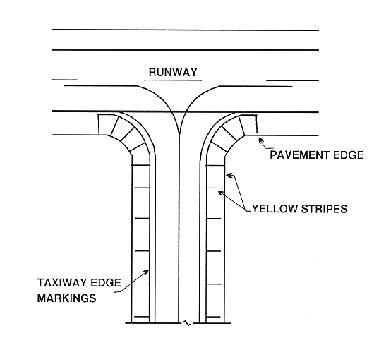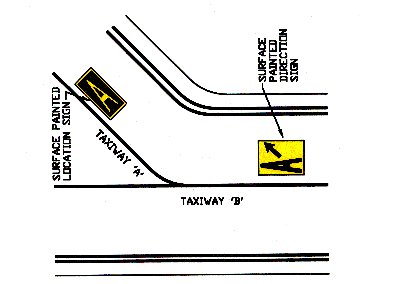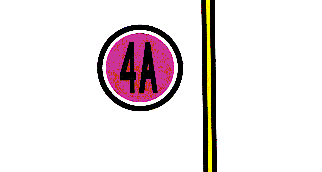Normal Taxiway Centerline Markings
Taxiway centerline markings consist of a single continuous yellow line, 6 to 12 inches in width. The centerline markings provide pilots guidance to aid in taxiing along the center of the taxiway.
Enhanced Taxiway Centerline Markings
The enhanced taxiway centerline marking may be used to warn a pilot of an upcoming runway. It consists of yellow dashed lines on either side of the normal taxiway centerline. These dashes extend up to 150 feet prior to a runway holding position marking. They are used to aid pilots in maintaining awareness during surface movement in order to reduce runway incursions. In a runway incursion, a pilot enters a runway by mistake or improperly. Runway incursion avoidance is extremely important, since a runway incursion introduces the possibility of a collision between two aircraft on the runway.
Taxiway Edge Markings
Taxiway edge markings consist of continuous double yellow lines, which are used to define the taxiway edge from the adjacent surface or terrain. When the pavement adjacent to the taxiway is usable by aircraft, then dashed lines are used, instead of continuous lines.
Taxi Shoulder Markings
Areas usable for aircraft taxi are sometimes provided with paved shoulders. These shoulders are not intended for taxi and cannot hold the weight of many aircraft without being destroyed. Taxiway shoulder markings may be used in these areas to help pilots identify them.
Surface Painted Taxiway Direction Signs
Sometimes taxiway direction signs are painted on the taxiway next to the taxiway centerline to aid pilots in orientation and situational awareness during taxi. The direction signs have a yellow background and a black inscription. If the taxiway is to the left, the sign will be painted to the left side of the taxiway centerline. If a right turn is indicated, the sign is painted on the right side of the taxiway centerline.
Surface Painted Location Signs
Surface painted location signs are sometimes used to aid the pilot in confirming the taxiway being used. These markings have a black background with a yellow inscription, and are painted on the right side of the taxiway centerline.
Geographic Position Markings
At airports having low visibility taxi routes, geographic position markings may be used to assist pilots taxiing along these routes during low visibilities. When used, they are painted to the left of the taxiway centerline in the direction of taxi. The marking is a circle comprised of an outer black ring contiguous to a white ring with a pink circle in the middle. If installed on a dark colored pavement, the white and black rings are reversed to aid in visibility. These markings may contain either a number or letter, which is used to identify position along a low visibility taxi route.
As a VFR pilot, you will not need to use geographic position markings. You must simply not confuse them for another type of marking if you encounter one.
Closed Taxiway Markings
Temporarily closed taxiways are usually treated as hazardous areas and blocked with barricades. As an alternative, a yellow cross may be installed at each entrance to the taxiway.
